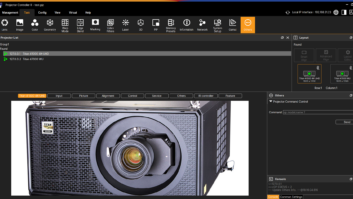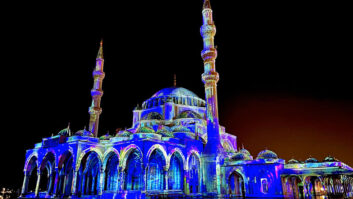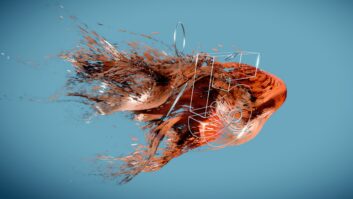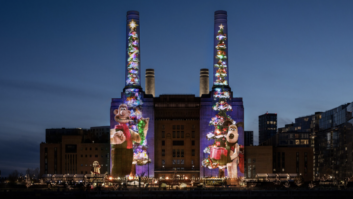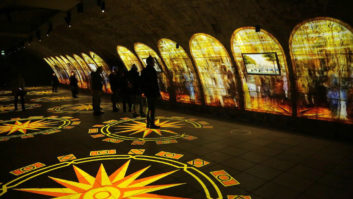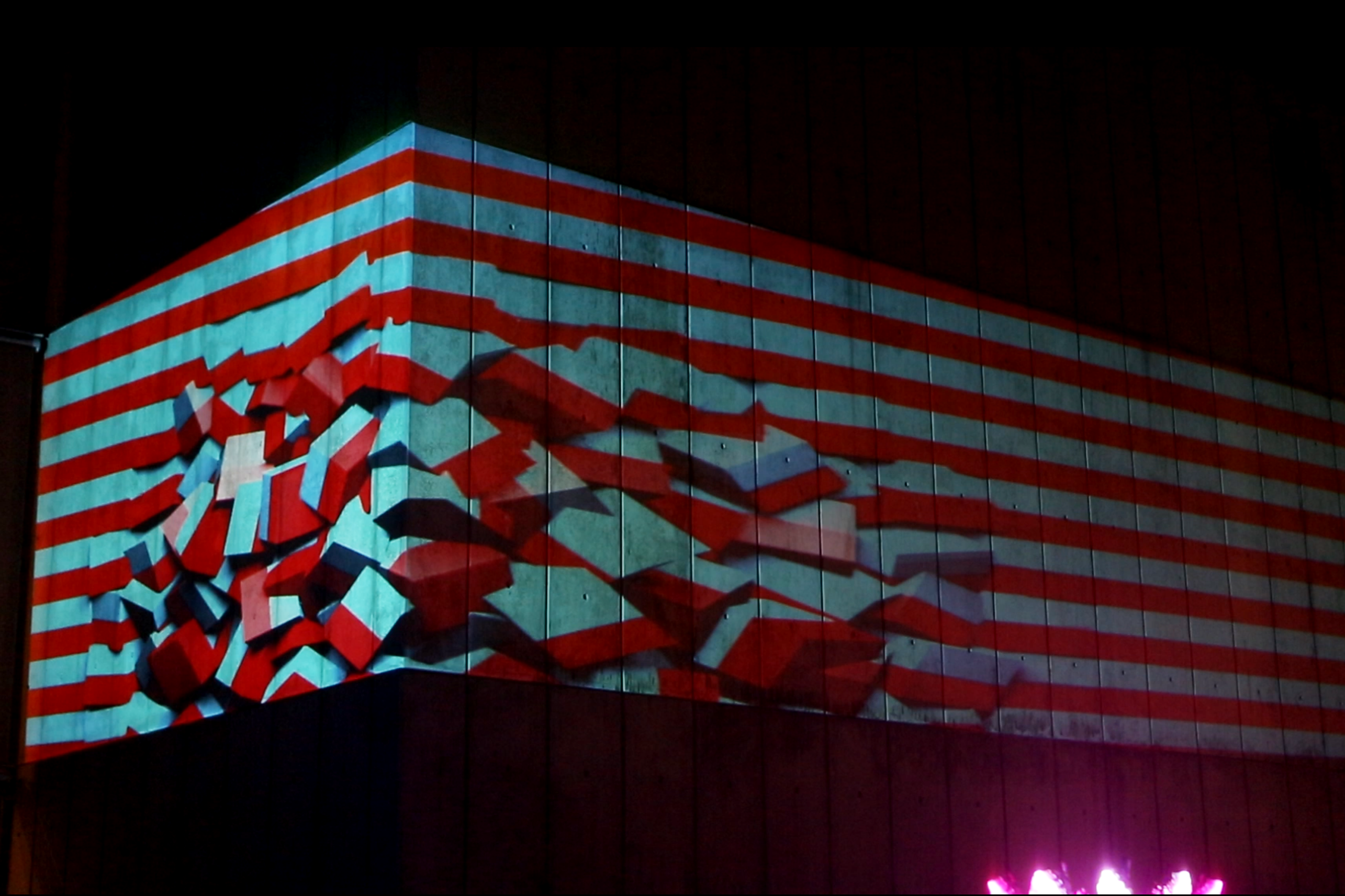
Danny Firpo, managing partner at All of It Now, a creative agency specialising in projection mapping and an Epson solutions partner, reveals some common pitfalls to avoid on mapped projects, and looks at the applications projection mapping is expanding into.
What are some of the biggest pitfalls to avoid when designing, integrating, and maintaining mapped projects?
If the projector is placed incorrectly, extruding faces on the surface can create silhouettes in the projection. If projecting from above, avoid using extruding faces that can block other surfaces below. Use projector specifications to review mounting hardware and lensing limitations, as improper planning can result in a show-stopping failure. Projection throw calculation and the production engineering process becomes extremely important in placement design.
The structure can be moved out of alignment from the original mapping over time by vibration from a nearby sound system, or from users walking near the object when it is not isolated from the surrounding floor. The scale of the structure plays an important role in how the content appears on the structure. Fast-moving content that initially was appropriate on a monitor can become jarring or disorienting when scaled up to an immense size.
Negative space in the content can give the structure room to breathe when projected on the structure, expanding to fill the space and fulfilling the ethereal quality that makes projection so unique. This contrast can elevate the storytelling to a new level by creating a climactic composition. In contrast, a projection constantly plastered onto the structure like a second skin can suffocate even the best projection surfaces.
A common pitfall is losing sync between outputs by introducing an additional device in the signal flow, or adding keystoning or scaling that is not added consistently across all projectors. This is most noticeable in content, with linear vertical motion spanning multiple projectors. A visible lag in one of the projectors will break the feeling of a single, cohesive image across the full canvas area.
Finally, selecting a flexible mapping software allows the designer to add final touch-ups, and perform periodic tweaks if needed. The ability to dynamically adjust frame delay, edge masking, and output mapping guarantees that even if external factors compromise system integrity, the system is flexible enough to accommodate these changes.
How are projection mapping applications expanding further into different markets, like sport, entertainment and corporate showpieces. What is different about selling into these environments?
Sporting events, performing arts, fashion, and automotive are among the types of activations and special events that require a unique display for presentation.
The flexibility of projection mapping allows for integration of stunning visual effects with an existing projection surface to produce an unconventional ‘wow’ factor. Customisable solutions are expanding integration capabilities and creating new possibilities, such as motion-tracked performances and a variety of digital marketing activations.
Accuracy of pre-production planning and calculations become a crucial factor in ease of final execution and installation quality. Because projection mapping projects involve so many fields of knowledge, a cohesive, multidisciplinary team is a must.
Because of the social engagement inherent in these installations, designing a project for engaging social media introduces other challenges. The project needs to be designed to not only attract users on-site, but also needs to translate well on camera, requiring the design team to balance lighting elements and exterior conditions while still providing an exciting environment for the user.
How is edge blending becoming more sophisticated?
The projector’s built-in image warping engine will often produce better results than software solutions, which typically create pixel distortion upstream of the projector’s output.
A software blending solution works best with complex blends where the surface does not have a fixed plane or fixed angle curvature. In this situation, pixel distortion is less of a factor, as the image is already being distorted by the surface itself. Availability of a 3D model is also a significant factor in pursuing a software approach. Edge blending across a complex, multi-dimensional surface can be efficiently calculated and performed via software in situations where hardware edge blending is not an option.
